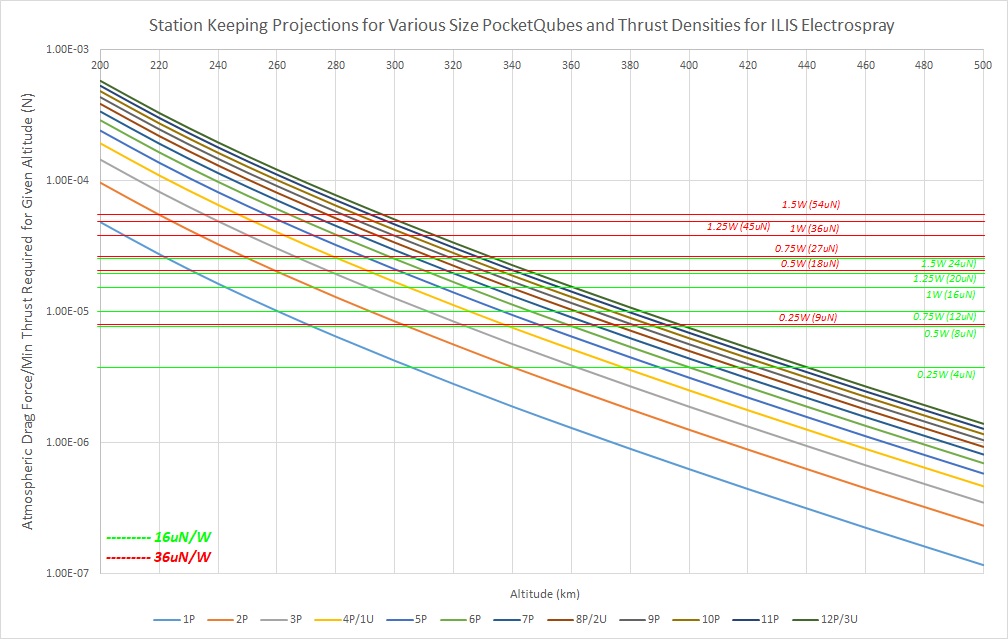Diving further into ILIS electrospray thrusters from my prior post here, it is increasingly apparent the exciting potential of this thruster technology for small satellites. As part of my ongoing study for the implementation of these thrusters down to the PocketQube level, I have begun to look at feasibility for what is reasonable thrust to expect at various power levels and thrust densities based on performance in literature so far. Below is a graph I assembled detailing station keeping projections for a large range of PocketQube (and Cubesat) sizes for various anticipated thruster performances.
The graph first plots out estimated drag forces at various altitudes for satellite cross-sectional sizes ranging from 1P-12P size PocketQubes. While drag-force to altitude graphs are nothing new, the goal is to use this as a base guideline for estimating the minimum ideal thrust requirements for station keeping for the presented technology. Cutting across the drag force lines are two sets of horizontal lines (green and red). These represents the low and high values of thrust densities reported in literature so far for macro-scale ILIS thrusters. This correlates to 16uN/W and 36uN/W respectively. For each of the two thrust density categories, I have broken them down further into six steps, based on input power levels and projected output thrust. Steps are from 0.25W to 1.5W in 0.25W increments. By knowing the available power budget on your PocketQube (or Cubesat) for propulsion, you can estimate what altitudes can be theoretically maintained for a given thrust level at that power for both reasonably expected and ideal cases of thrust density for a given satellite cross-sectional size.
This is meant to be a rough initial guideline for propulsion planning and selection based on a wide number of parameters and projected performance ranges. However, it can be seen that such a thruster can have a very wide range of potential use-ability across the board. The numbers presented also only go up to 1.5W max input power – with multiple paralleled modules at higher input power, much more thrust could be achieved. This means that by utilizing basic thruster blocks, such as the newly proposed AIS-ILIS1 thruster module, quite high levels of thrust can be achieved for very low input power. 1.5W is manageable for a well equipped PocketQube, and is trivial for Cubesats. Assuming an average performance of about 26uN/W, if we scale up to only 4W we start breaking into the 100uN thrust threshold, which opens up quite a bit of options for station keeping. Optimizing the design for higher thrust densities allows for even better performance. With this encouraging data, it is apparent that an attempt for PocketQube level ILIS thrusters must be taken. And that is exactly what I plan to do!

